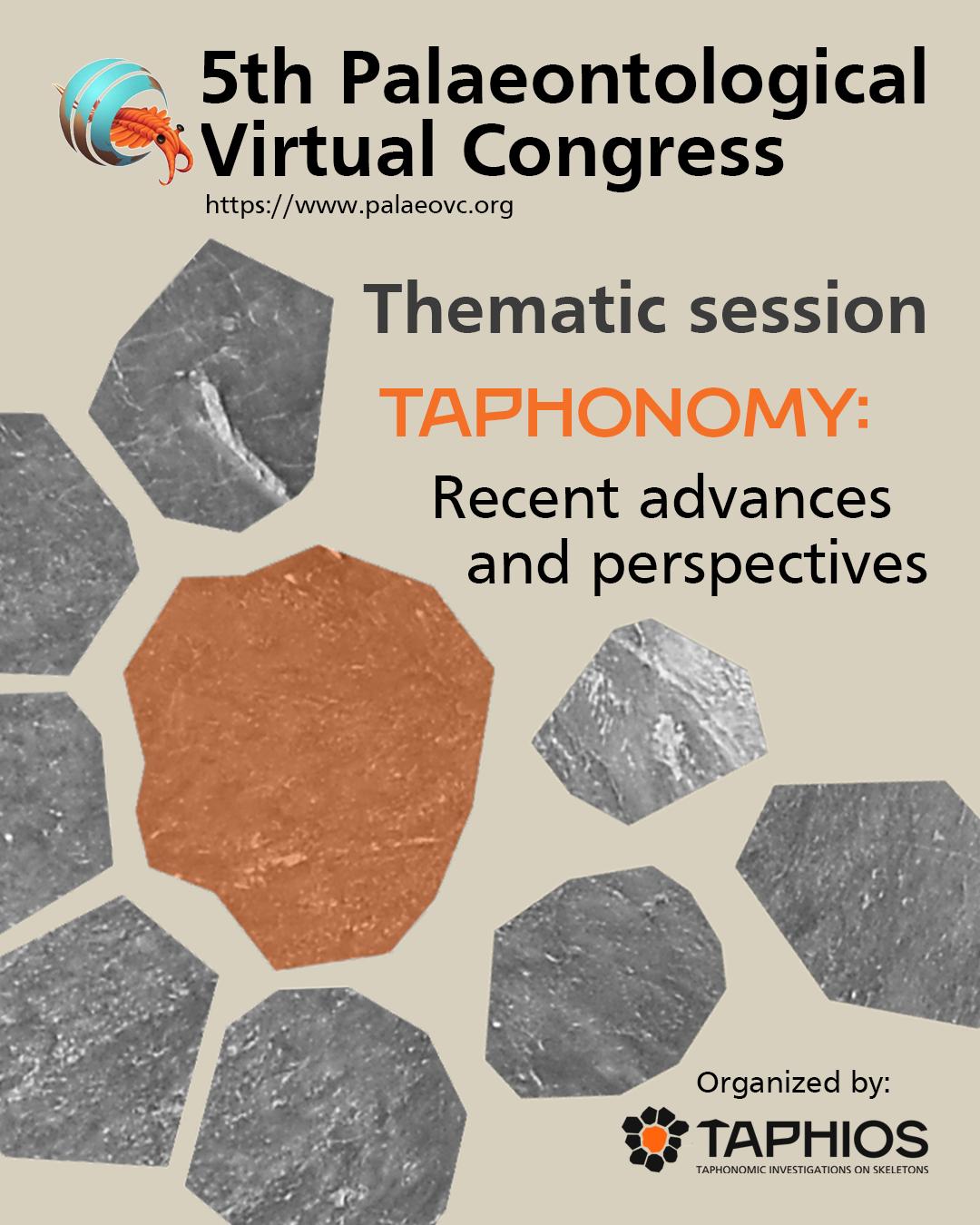Taphonomy: Recent advances and perspectives

AUTHORS
Dores Marin-Monfort
INGEOSUR, Departamento de Geología Universidad Nacional del Sur (UNS)-CONICET, Argentina
Department de Botànica i Geologia, Universitat de València, Spain
Departamento de Paleobiología, Museo Nacional de Ciencias Naturales (CSIC), Spain
doresmarinmonfort@gmail.com
Gabriel Nahuel-Ruiz
INGEOSUR, Departamento de Geología Universidad Nacional del Sur (UNS)-CONICET, Argentina
Claudia I. Montalvo
Facultad de Ciencias Exactas y Naturales, Universidad Nacional de La Pampa, Argentina
Fernando J. Fernández
CONICET-Grupo de Estudios en Arqueometría, Universidad de Buenos Aires (UBA), Argentina
Rodrigo L. Tomassini
INGEOSUR, Departamento de Geología Universidad Nacional del Sur (UNS)-CONICET, Argentina
Abstract
Since the pioneering work in 1940 by Ivan Efremov, taphonomy has been embraced by various Earth and Human Sciences, deepening our understanding of the biotic and abiotic factors that influence preservation of organisms. However, taphonomic observations were made in different parts of the world as early as the 19th century. Initially, taphonomy focused on information loss of the fossil record. However, since the 1980s, this discipline has become a valuable tool that offers insights into paleoecology, paleoenvironments, and paleoclimates. More recently, neotaphonomic studies have notably increased aiming to interpret patterns of death, decomposition, and burial in different modern environments and develop analogues that help evaluate the fossil record. This approach places special emphasis on investigating taphonomic agents and processes themselves and their relationship with the characteristics of the preservation context. This session, organized by the TAPHIOS Group, invites contributions on a wide range of taphonomic topics: biological, physical, and chemical modifications, formation of paleontological sites, experimental taphonomy, methodologies and techniques applied to taphonomic research, and the history of the discipline. We welcome submissions that explore on diverse organisms, depositional environments, processes and agents, and temporal intervals, as well as both macro- and microscale features. By fostering research from varied perspectives, this session aims to highlight the pivotal role of taphonomy in reconstructing the post-mortem history of remains and interpreting their preservation context. Ultimately, the session underscores the importance of taphonomic studies as foundational to paleontological research.
